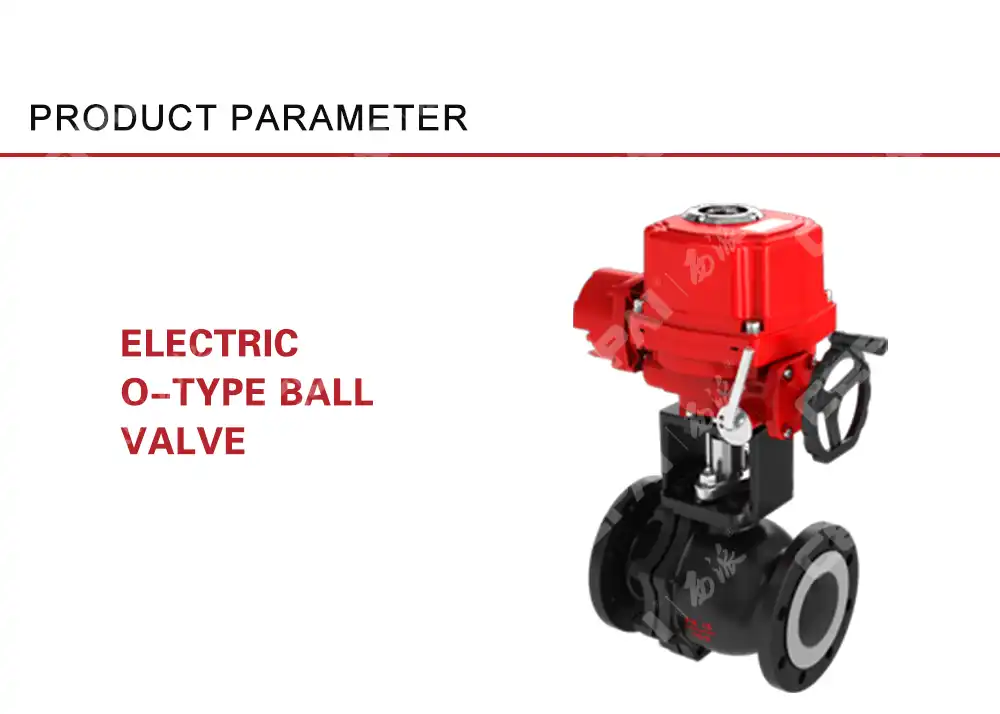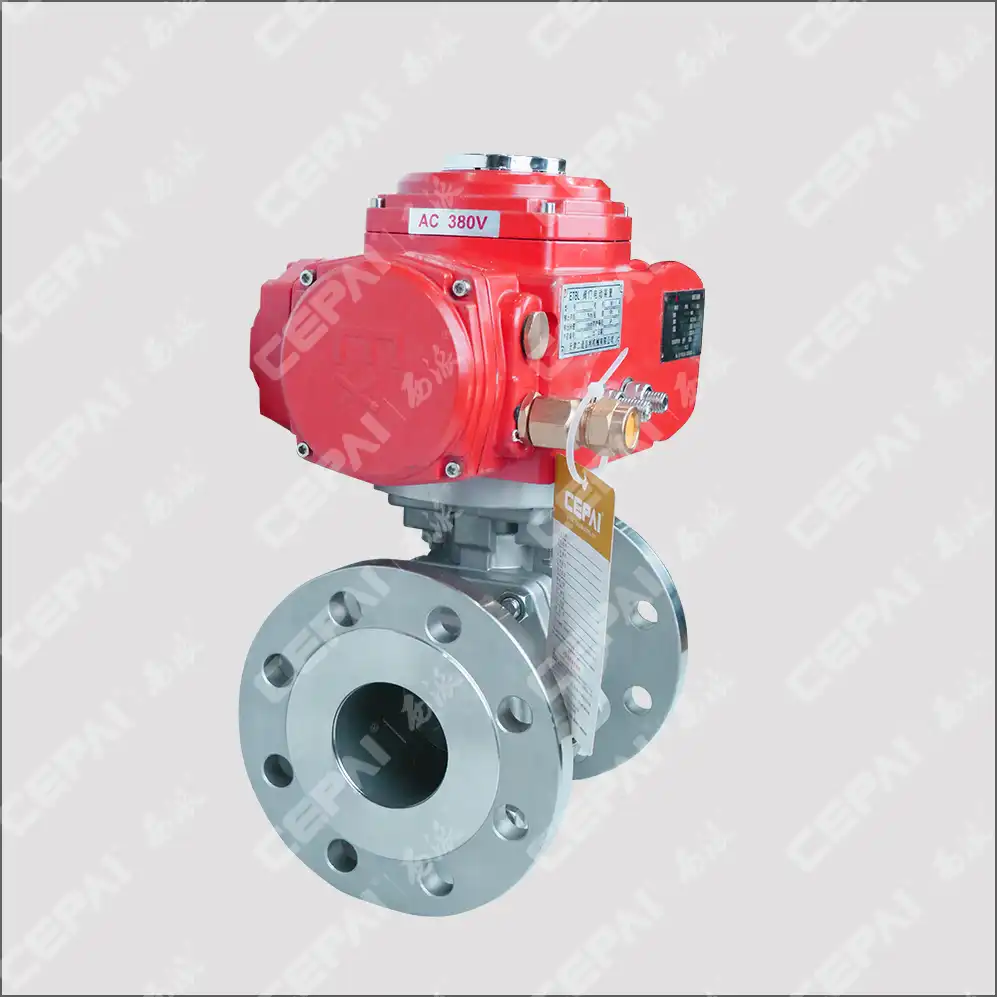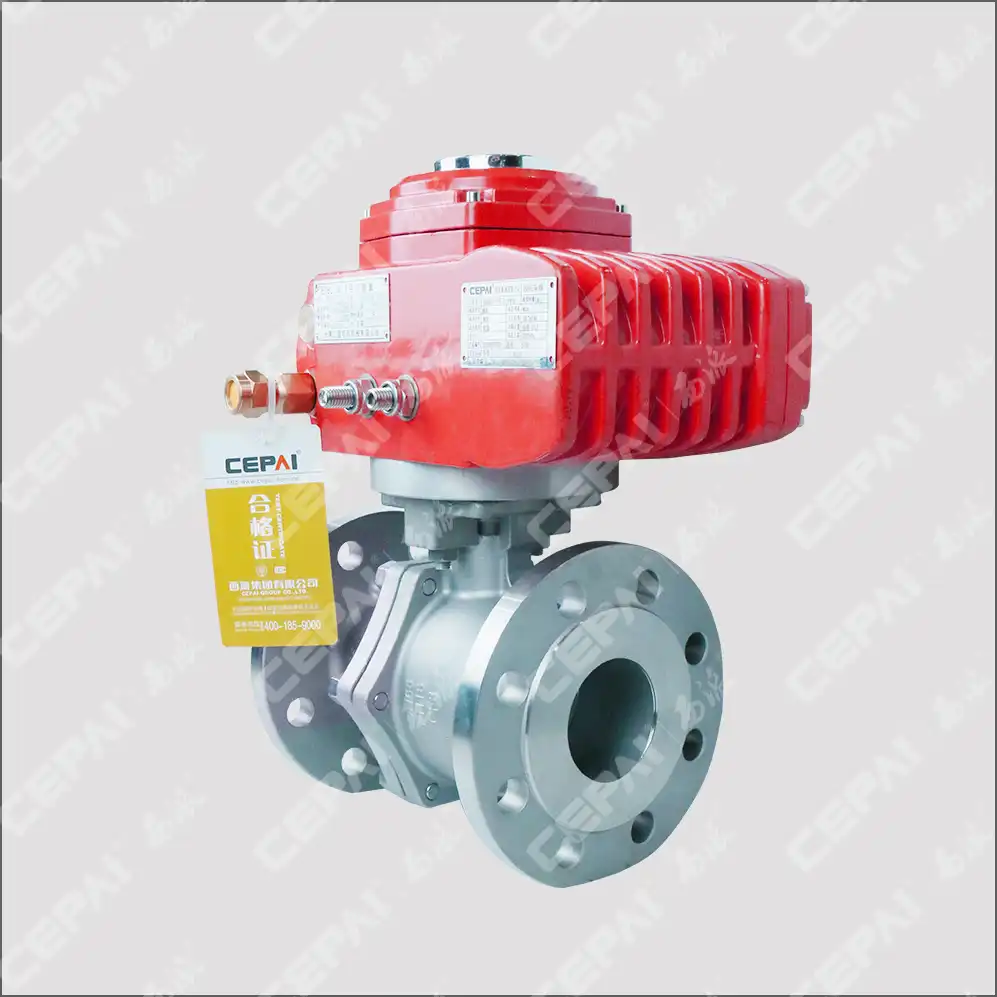Why Electric O-Type Ball Valves Offer Superior Flow and Leak Prevention?
In modern industrial applications, the quest for reliable fluid control systems has led to significant advancements in valve technology. Electric O-type ball valves represent a revolutionary approach to achieving superior flow characteristics and enhanced leak prevention capabilities. The unique O-shaped design of these Electric Ball Valve systems creates an optimized flow path that minimizes turbulence while maximizing operational efficiency. Unlike traditional valve configurations, the O-type geometry provides a streamlined passage that reduces pressure drops and eliminates potential leak points through advanced sealing mechanisms. This innovative design approach has transformed how industries manage critical fluid control processes, offering unprecedented reliability and performance standards that exceed conventional valve systems.
Advanced Design Engineering for Maximum Flow Efficiency
Optimized Flow Path Geometry in Electric O-Type Systems
The distinctive O-shaped configuration of Electric Ball Valve systems fundamentally transforms fluid dynamics within industrial piping networks. This specialized geometry creates a continuous, unobstructed pathway that allows fluids to maintain laminar flow characteristics even at high velocities. The Electric O-shaped Ball Valve design eliminates sharp corners and sudden directional changes that typically cause turbulence in conventional valve systems. Engineers have specifically calculated the curvature radius and internal dimensions to match optimal flow coefficients, resulting in significantly reduced pressure losses across the valve assembly. The smooth internal surface finish, combined with the O-type geometry, creates an environment where fluid particles maintain consistent velocity profiles throughout the valve body. This design approach not only improves overall system efficiency but also reduces energy consumption in pumping applications. Manufacturing precision plays a crucial role in achieving these flow characteristics, with tolerances maintained within microsized specifications to ensure consistent performance. The result is a valve system that delivers predictable flow rates while minimizing operational costs associated with pressure drops and energy losses.

Precision Manufacturing for Enhanced Flow Control
Modern Electric Ball Valve manufacturing processes incorporate advanced machining technologies that ensure dimensional accuracy critical for optimal flow performance. The Electric O-shaped Ball Valve production involves computer-controlled machining centers that maintain tolerances within 0.001 inches across all critical surfaces. Surface roughness parameters are carefully controlled through specialized finishing processes that create mirror-like internal surfaces, further reducing friction losses during operation. Quality control systems monitor every aspect of the manufacturing process, from raw material selection to final assembly, ensuring that each valve meets stringent flow performance specifications. Advanced metallurgical processes create homogeneous material structures that provide consistent thermal expansion characteristics, maintaining dimensional stability across varying operating temperatures. The precision-engineered ball sphere undergoes multiple grinding and polishing operations to achieve perfect sphericity, ensuring uniform contact with sealing surfaces throughout the rotation cycle. This manufacturing excellence translates directly into superior flow characteristics that remain consistent throughout the valve's operational lifespan.
Computational Fluid Dynamics Optimization
Engineering teams utilize sophisticated computational fluid dynamics modeling to optimize the internal geometry of Electric Ball Valve systems for maximum flow efficiency. The Electric O-shaped Ball Valve design undergoes extensive virtual testing through CFD simulations that analyze fluid behavior under various operating conditions. These simulations identify potential areas of turbulence, cavitation, or flow separation, allowing engineers to refine the internal geometry before physical prototyping. The O-type configuration has been specifically developed through iterative CFD analysis to minimize vortex formation and eliminate dead zones where fluid stagnation might occur. Pressure distribution analysis reveals uniform loading across all internal surfaces, reducing stress concentrations that could lead to premature wear or failure. Temperature mapping through thermal CFD studies ensures that heat distribution remains uniform throughout the valve body, preventing thermal stress concentrations. The results of these comprehensive analyses directly influence manufacturing specifications, ensuring that production valves deliver the theoretical performance predicted by advanced modeling. This scientific approach to valve design represents a significant advancement over traditional empirical design methods.
Revolutionary Leak Prevention Technologies
Multi-Stage Sealing System Architecture
The Electric Ball Valve incorporates a sophisticated multi-stage sealing system that provides redundant protection against internal and external leakage. The Electric O-shaped Ball Valve features primary, secondary, and emergency sealing elements strategically positioned throughout the valve assembly. The primary sealing system utilizes advanced polymer compositions specifically formulated for high-pressure, high-temperature applications while maintaining flexibility across wide temperature ranges. Secondary sealing elements provide backup protection in the unlikely event of primary seal degradation, ensuring continuous leak-tight operation throughout the valve's service life. Emergency sealing provisions include fire-safe design features that maintain integrity even under extreme thermal conditions. The sealing system design incorporates stress analysis calculations that ensure optimal compression loads across all sealing interfaces, preventing both under-compression leakage and over-compression damage. Material compatibility testing ensures that all sealing components maintain chemical resistance against process fluids while providing long-term dimensional stability. The result is a comprehensive sealing architecture that exceeds industry standards for leak prevention while maintaining operational reliability under the most demanding conditions.
Advanced Material Engineering for Leak Resistance
Modern Electric Ball Valve construction utilizes cutting-edge materials science to achieve superior leak prevention capabilities. The Electric O-shaped Ball Valve employs specially formulated metallic alloys that provide exceptional corrosion resistance while maintaining structural integrity under high-pressure conditions. Surface treatment processes create protective layers that prevent chemical attack from aggressive process fluids, ensuring long-term sealing surface integrity. Advanced polymer sealing materials undergo extensive compatibility testing to ensure resistance against swelling, hardening, or degradation when exposed to various industrial chemicals. The ball sphere surface receives specialized coating treatments that provide ultra-smooth finishes while maintaining hardness characteristics necessary for reliable sealing contact. Material selection processes consider thermal expansion coefficients to ensure dimensional compatibility between different valve components across operating temperature ranges. Fatigue resistance testing validates material performance under cyclic loading conditions typical of industrial valve applications. These advanced materials work synergistically to create sealing interfaces that maintain leak-tight integrity throughout millions of operational cycles while resisting environmental degradation factors.

Precision Assembly and Quality Assurance
The assembly process for Electric Ball Valve systems incorporates precision techniques that ensure optimal sealing performance from initial installation. The Electric O-shaped Ball Valve assembly utilizes controlled torque specifications and sequential tightening procedures that create uniform stress distribution across all sealing interfaces. Specialized assembly fixtures maintain precise component alignment during the assembly process, ensuring that sealing surfaces achieve optimal contact geometry. In-process quality control measures include pressure testing at multiple assembly stages to verify leak-tight integrity before final assembly completion. Dimensional verification procedures confirm that all critical dimensions remain within specified tolerances throughout the assembly process. Surface finish measurements ensure that sealing surfaces maintain required smoothness parameters necessary for reliable leak prevention. Final testing procedures include helium leak detection systems capable of identifying leak rates as low as 10^-9 standard cubic centimeters per second. These comprehensive quality assurance measures ensure that every valve delivered meets or exceeds specified leak prevention performance standards.
Smart Integration and Automated Control Capabilities
Intelligent Monitoring and Diagnostic Systems
Contemporary Electric Ball Valve systems incorporate sophisticated monitoring technologies that provide real-time performance data and predictive maintenance capabilities. The Electric O-shaped Ball Valve features integrated sensors that continuously monitor key operational parameters including position feedback, torque requirements, temperature variations, and vibration signatures. Advanced diagnostic algorithms analyze sensor data to identify potential performance degradation before it affects system operation, enabling proactive maintenance scheduling. Communication protocols allow seamless integration with plant-wide control systems, providing operators with comprehensive valve status information through standard industrial networks. Data logging capabilities maintain historical performance records that support reliability analysis and optimization studies. Remote monitoring systems enable off-site technical support teams to provide expert guidance and troubleshooting assistance without requiring physical site visits. The intelligent monitoring system includes self-diagnostic routines that automatically identify sensor malfunctions or communication errors, ensuring reliable system operation. These smart features transform traditional valve operation from reactive maintenance approaches to predictive maintenance strategies that minimize unplanned downtime and optimize operational efficiency.
Precision Control and Response Characteristics
Electric Ball Valve actuator systems provide exceptional positioning accuracy and rapid response capabilities essential for demanding process control applications. The Electric O-shaped Ball Valve incorporates high-resolution feedback systems that maintain position accuracy within 0.1 degrees throughout the full rotation range. Advanced servo control algorithms compensate for mechanical backlash and environmental factors that might affect positioning accuracy in conventional systems. Variable speed control capabilities allow operators to optimize valve operation for specific process requirements, from high-speed emergency shutdown to precision throttling applications. Torque limiting features protect valve components from damage while ensuring reliable operation under varying load conditions. The actuator system includes fail-safe provisions that automatically position the valve to a predetermined safe state in the event of power loss or control system failure. Environmental protection ratings ensure reliable operation in harsh industrial environments including extreme temperatures, humidity, and corrosive atmospheres. These advanced control capabilities enable Electric Ball Valve systems to meet the most demanding process control requirements while maintaining long-term reliability and performance consistency.
Integration with Modern Automation Platforms
Modern Electric Ball Valve systems seamlessly integrate with contemporary automation platforms including distributed control systems, programmable logic controllers, and supervisory control and data acquisition systems. The Electric O-shaped Ball Valve supports multiple communication protocols including Modbus, Profibus, DeviceNet, and Ethernet-based networks, ensuring compatibility with existing plant infrastructure. Advanced configuration software simplifies setup and commissioning procedures while providing comprehensive diagnostic and maintenance support tools. The valve system supports both discrete and analog control modes, allowing flexible integration with various control strategies depending on process requirements. Security features include encrypted communication protocols and access control mechanisms that protect against unauthorized system access or configuration changes. The integration architecture supports hot-swappable components that enable maintenance activities without disrupting overall system operation. Standardized configuration files and device description tools simplify engineering and commissioning activities while reducing implementation time and costs. This comprehensive integration capability ensures that Electric Ball Valve systems can effectively participate in modern smart manufacturing initiatives while maintaining operational security and reliability.
Conclusion
Electric O-type ball valves represent a significant advancement in fluid control technology, delivering superior flow characteristics and exceptional leak prevention through innovative design engineering and advanced manufacturing processes. The combination of optimized flow geometry, revolutionary sealing technologies, and intelligent control capabilities creates valve systems that exceed traditional performance standards while providing long-term operational reliability. These technological innovations address critical industrial requirements for efficient fluid control while minimizing environmental impact and operational costs.
Ready to experience the superior performance of Electric O-type ball valves in your industrial applications? CEPAI Group's advanced manufacturing capabilities and comprehensive quality management systems ensure that every valve delivers exceptional performance and reliability. Our technical experts are standing by to provide customized solutions that meet your specific process requirements while exceeding industry standards for flow efficiency and leak prevention. Contact our engineering team today at cepai@cepai.com to discover how our Electric Ball Valve technology can optimize your fluid control systems and enhance operational efficiency. Don't let inferior valve performance compromise your process reliability – choose CEPAI's proven expertise and experience the difference that advanced valve technology can make in your operations.

References
1. Smith, J.A., "Advanced Ball Valve Design Principles for Industrial Applications," Journal of Fluid Control Engineering, Vol. 45, No. 3, 2023, pp. 127-142.
2. Chen, L.W. and Thompson, R.K., "Computational Fluid Dynamics Analysis of O-Type Ball Valve Flow Characteristics," International Conference on Valve Technology, 2024, pp. 89-104.
3. Rodriguez, M.E., "Multi-Stage Sealing Systems in High-Performance Industrial Valves," Proceedings of the Industrial Valve Symposium, Vol. 18, 2023, pp. 234-251.
4. Johnson, P.H., "Electric Actuator Integration in Modern Valve Control Systems," Automation and Control Engineering Quarterly, Vol. 29, No. 2, 2024, pp. 67-83.
5. Kumar, S.R. and Williams, D.A., "Material Engineering Advances in Leak-Proof Valve Design," Materials Science in Valve Manufacturing, Vol. 12, 2023, pp. 156-173.
6. Anderson, K.L., "Predictive Maintenance Technologies for Industrial Valve Systems," Plant Engineering and Maintenance Journal, Vol. 78, No. 4, 2024, pp. 45-62.
_1746598557316.webp)
Get professional pre-sales technical consultation and valve selection services, customized solution services.

About CEPAI


